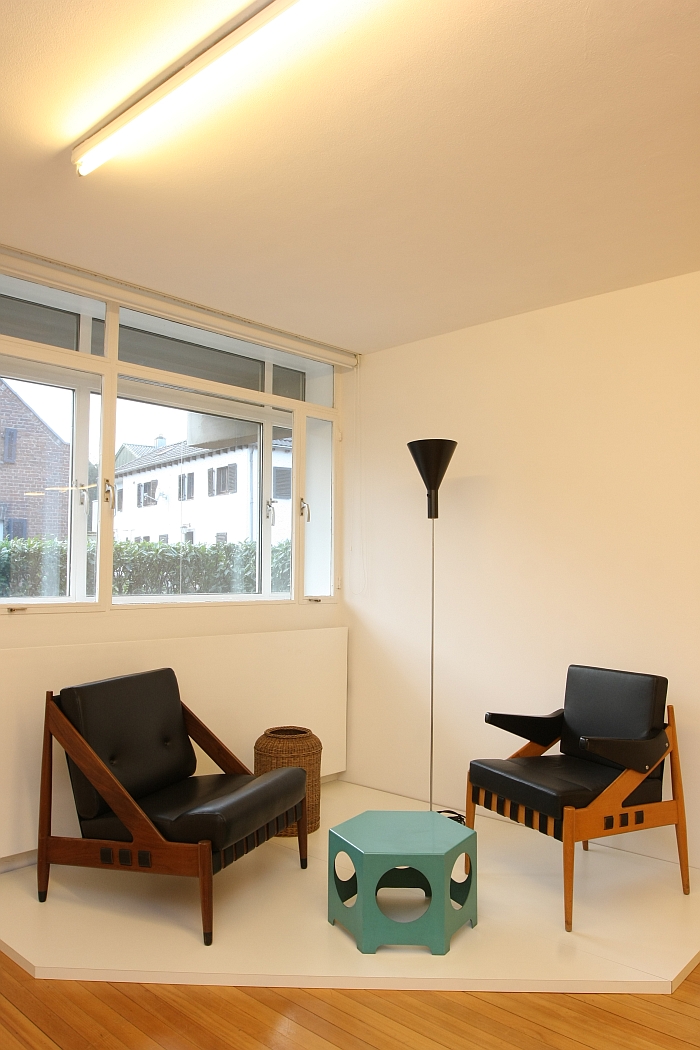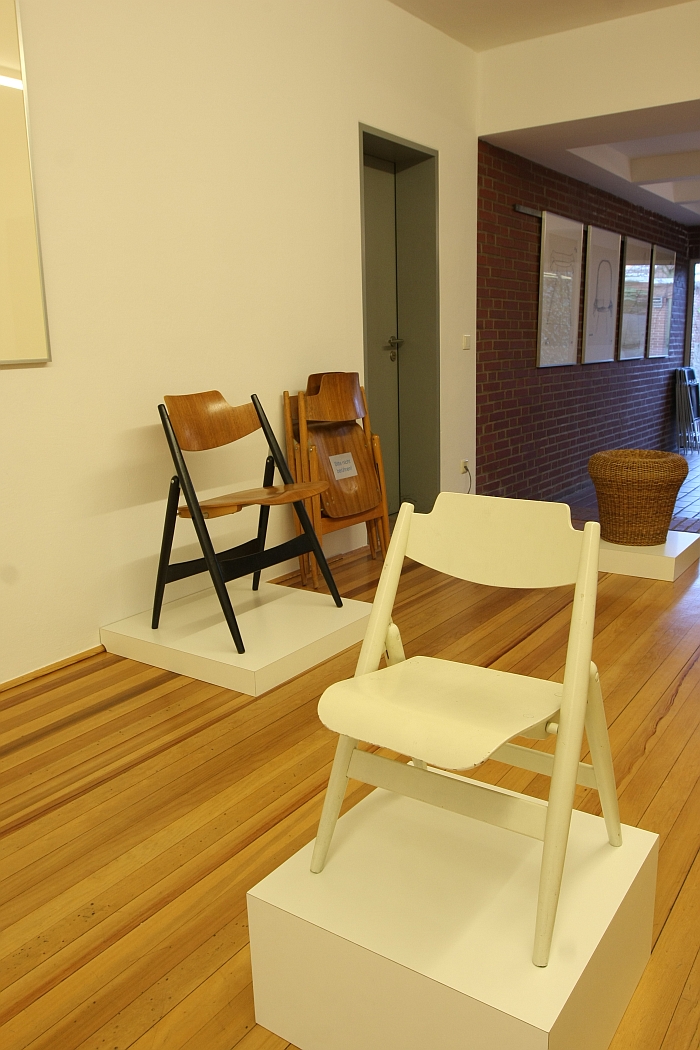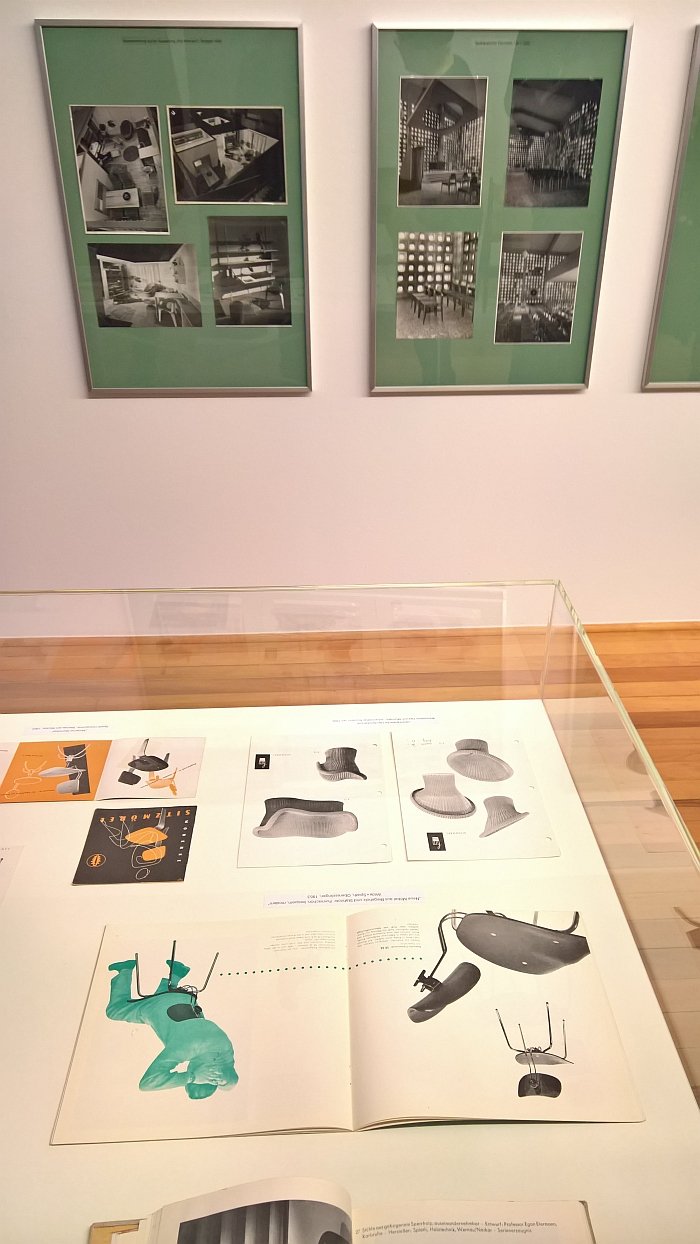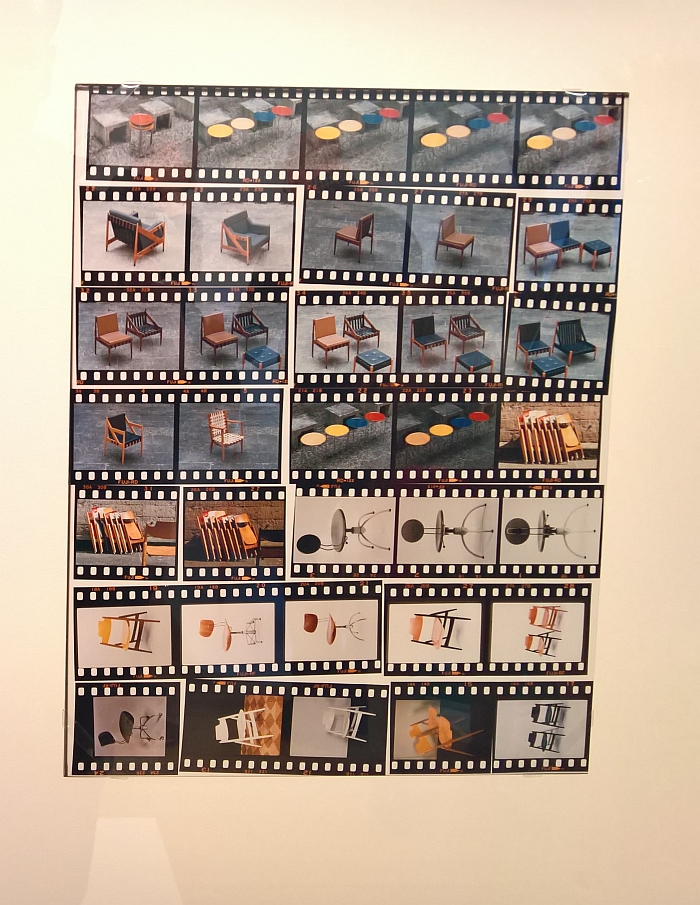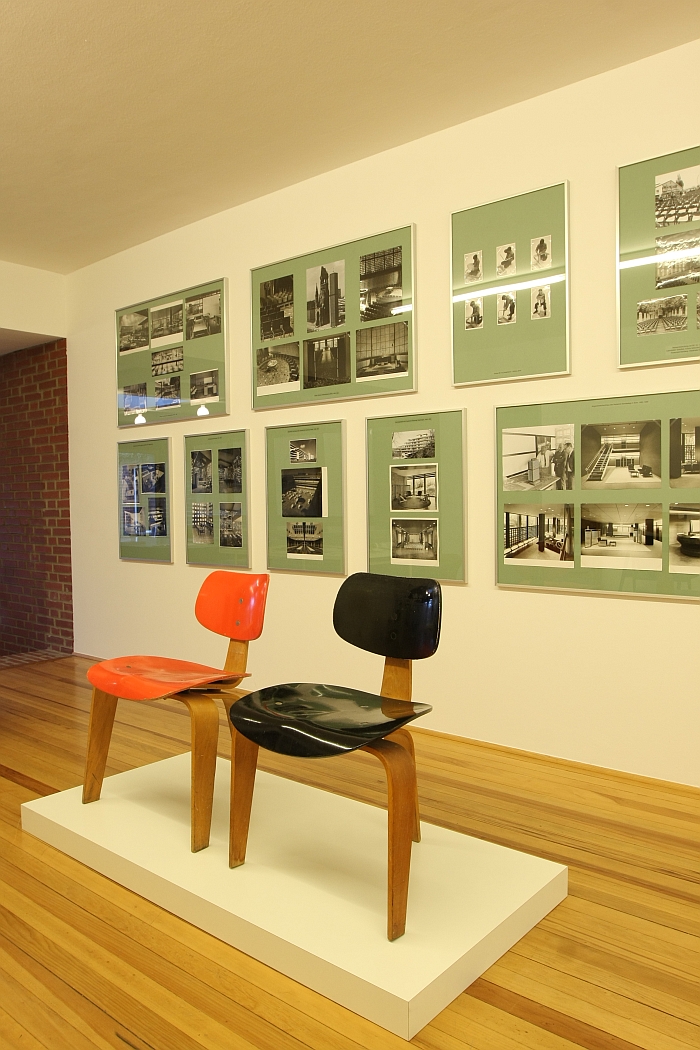Cologne Creative | Designer | Exhibitions and Shows | Passagen Cologne | Producer | Product | Richard Lampert | Wilde + Spieth
One of Germany's leading post-war architects and architectural theoreticians, Egon Eiermann was also one of post-war Europe's most important chair designers, not just in context of what he realised, but also in context of what he worked towards realising and the reasons why. With the exhibition Cologne celebrate that legacy.
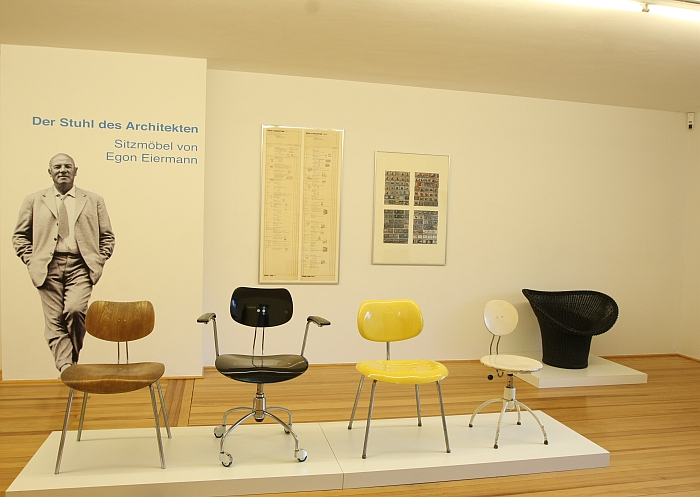
Although Egon Eiermann's career as a designer of industrially, mass produced, chairs begins in the late 1940, his association with furniture design does back to his student days in Berlin in the 1920s, studies which stood very much in context of the idea of the architectural Gesamtkunstwerk, of there being no separation of interior and exterior, between situation, facade, furnishings. Consequently, when Eiermann began his architectural career creating furniture for his projects was for him self-explanatory; among our favourite stories from Eiermann's early career is the one from 1931 where he persuaded family Hesse to include custom designed furniture in the house he was building for them in Berlin, promising that the new furniture wouldn't cost anymore than what they received from selling their old. They agreed and were rewarded with wood and wickerwork furniture which when not necessarily instantly recognisable as Eiermann, does contain approaches and understandings which would become central to the Eiermann oeuvre.
The switch from Eiermann the designer of individual project based furniture to Eiermann the industrial furniture designer, was, in many regards a consequence of the Second World War. Or perhaps better put, the necessity for affordable, and quickly producible, furniture to replace that lost in the war years. In addition came that the new, post-War housing was often smaller than that which it was replacing, facilitating a need for new thinking about furniture typologies.
Challenges in many regards similar to those explored by projects such as Neue Frankfurt in the 1920s, but which Egon Eiermann approached, as with most things, in his own inimitable manner.
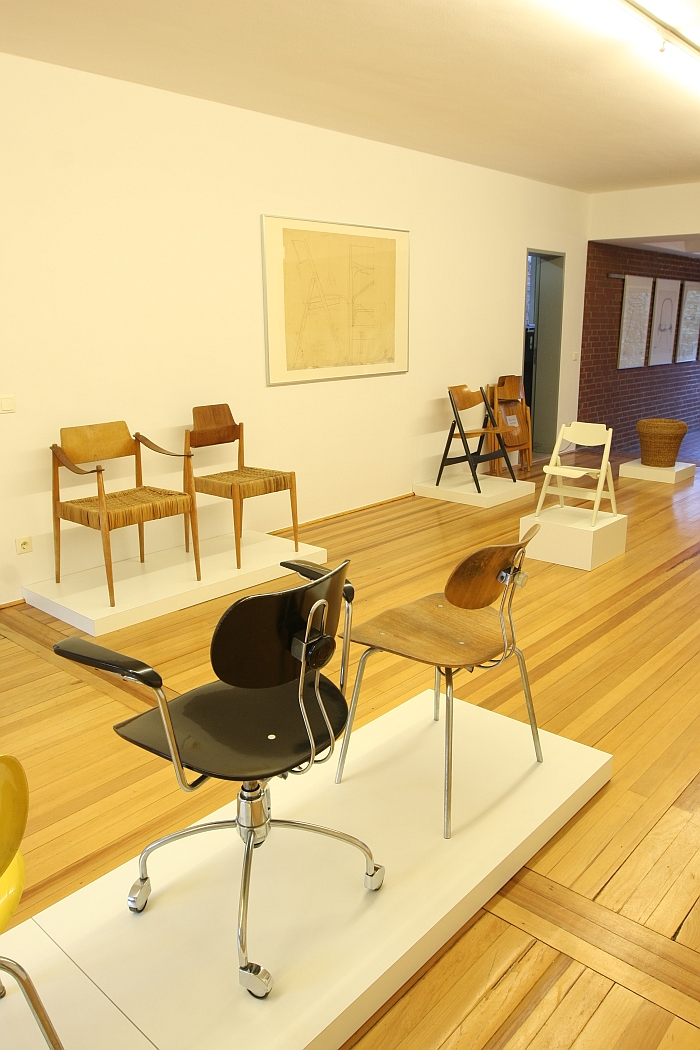
An important, decisive?, moment in Eiermann's progression was the exhibition "Wie Wohnen?" - How should we Live/Dwell/House? - staged in 1949 in Stuttgart and 1950 in Karlsruhe, and for which Eiermann was invited to create a show-interior of a four room flat for a five person family. The proposition featured, in addition to a shelving system distributed today by Richard Lampert as the Eiermann Regal, three chairs: the SE 1, a metal and plywood height-adjustable office chair; the SE 2, a similar model intended for the kitchen; and the SE 3 a three legged, moulded plywood side chair.
The "SE" standing for "Spieth Eiermann" and is in many regards as important as the chairs it describes, indicating as it does that "Wie Wohnen?" was also the start of Egon Eiermann's cooperation with the manufacturer Wilde+Spieth, a cooperation which over the course of two decades saw some 35 chairs realised, and one which was publicly launched in 1952 when Wilde+Spieth presented the first 3 Eiermann chairs at Cologne Furniture Fair.
66 years later the Ungers Archiv celebrate the chair designer Egon Eiermann
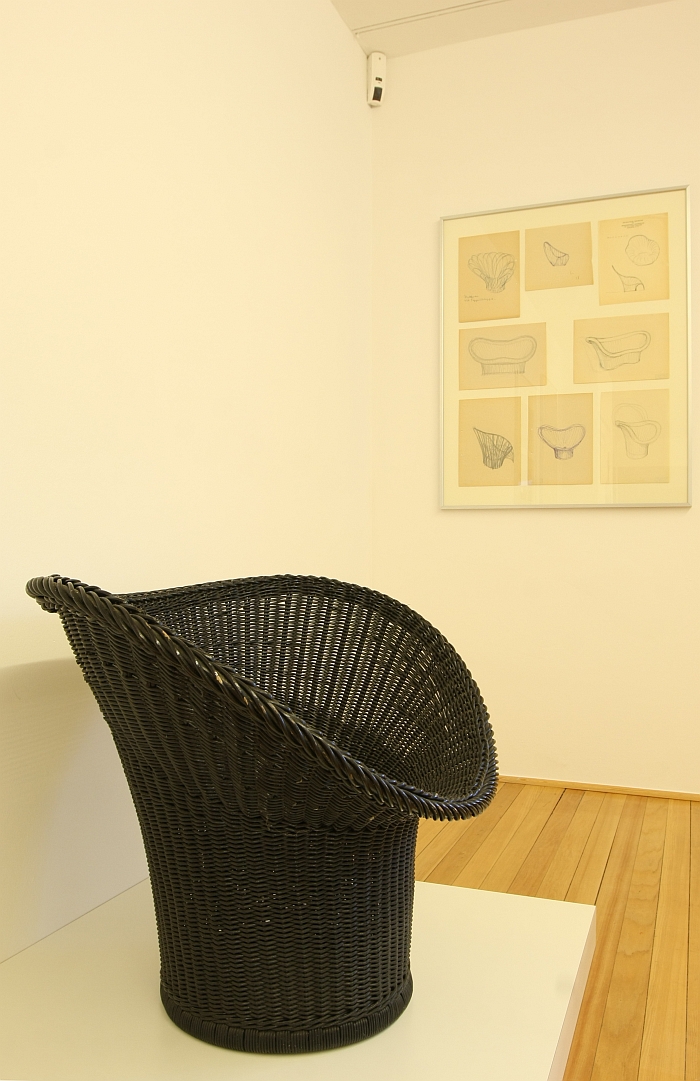
The location of the exhibition is not unimportant, O.M. Ungers studied architecture under Egon Eiermann in Karlsruhe in the early 1950s, a time when architecture and design in Germany was seeking new post-War, post-Nazi, direction and impetus. Egon Eiermann was one of the leading figures supplying just that, in his own inimitable manner, and that not just for a coming generation of architects such as O.M. Ungers, but also for wider society, and something he expressed through his architecture; works for which he naturally developed furniture and from which many ultimately become commercial objects, including, for example, the SE 68, and the related orchestra chair, developed in context of the Villa Berg concert hall for the SWR broadcasting company in Stuttgart, or the chairs rather the pews he developed for the Matthäuskirche in Pforzheim and the Kaiser-Wilhelm-Gedächtnis-Kirche in Berlin. Organised in conjunction with the Karlsruhe based Südwestdeutsches Archiv für Architektur und Ingenieurbau, saii, who are responsible for the Eiermann Archive, Sitzmöbel von Egon Eiermann presents chair designs from across not only the decades of Eiermann's commercial activity but also the various materials and typologies with which he worked, and which in addition to numerous examples of Wilde+Spieth chairs also includes another important part of Eiermann's chair deisgn work: his basket chairs, the Korbsessel he produced together with the basket weaving company Heinrich Murmann in Johannistal, and something which developed into a personal passion of Eiermann's. Reading the literature one sometimes has the feeling the Korbsessel were more hobby than profession, albeit a critical and commercially successful one
And so, we ask, Dr Gerhard Kabierske, from the saii, curator of both the Eiermann Archive and the exhibition, is there for him a key chair in the Eiermann portfolio?
"Rather than being one chair, the key to Eiermann's chair design work is the breadth and variety of projects and his meticulous attention to detail," he answers, "whether working with wood, metal, wicker, or for example developing plastic chairs, Eiermann always sought to improve that what he had realised, to develop his ideas and designs further"
This process is alluded too in the Eiermann sketches presented in the exhibition, sketches which although numerous, represent but a fraction of those which exist in the archive, sketching being an essential component of how Egon Eiermann worked, and which therefore eloquently explain how Eiermann continually sought to not only improve his design, but adapt and evolve them. The chairs and sketches are backed up by photographs, catalogues and magazine articles which help place the works in context: including a nice photo series which reminds visitors that the SE 3, the contemporary SE 42, was once sold in a flat-pack kit for home assembly: an eminently sensible solution in a time of economic need. And one that underscores that for Eiermann the chair was more than just the sum of its parts, but something created for a reason.
In no sense a comprehensive exploration of Egon Eiermann's chair design work, for that the scope of the subject stands in inverse proportion to the space available in the Ungers Archiv, Sitzmöbel von Egon Eiermann does provide for an accessible, clearly structured and entertaining introduction to the scope and process Egon Eiermann's chair design work; whereby a particular highlight for us is the opportunity afforded to get up close and personal with a large number of Eiermann chairs in a relatively compact space, to compare and contrast apparently very different works, discover the relationships and variations and thereby come closer to an understanding of Eiermann's understanding of the technical and aesthetic nature of the subject, his reduction, the openness of his construction systems, his understanding of materials and the thoroughly unpretentious yet fully engaging and communicative work that arose.
Or put another way of Egon Eiermann's own inimitable manner.
Der Stuhl des Architekten – Sitzmöbel von Egon Eiermann runs at Ungers Archiv für Architekturwissenschaft until Friday February 9th
Full details, inclsuing information on opening times can be found at www.ungersarchiv.de
